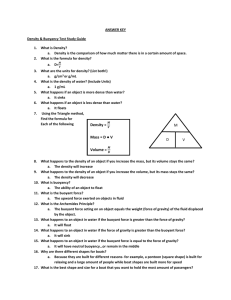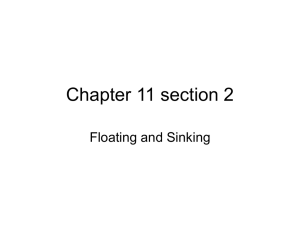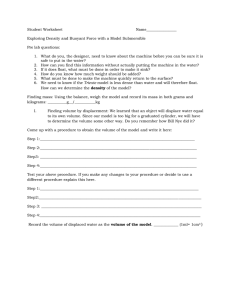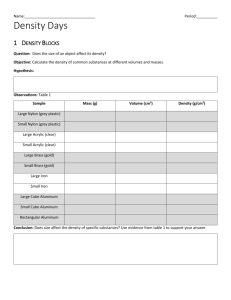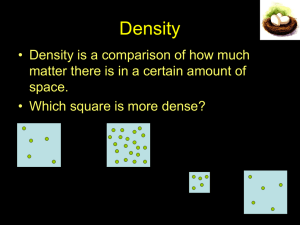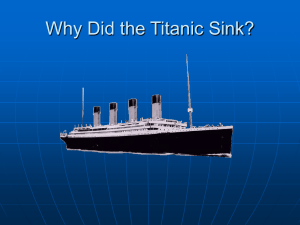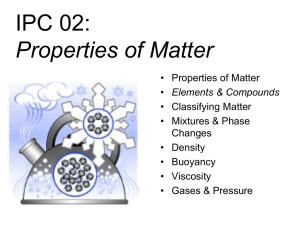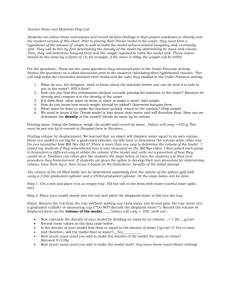Buoyancy & Archimedes' Principle: Fluids Presentation
advertisement
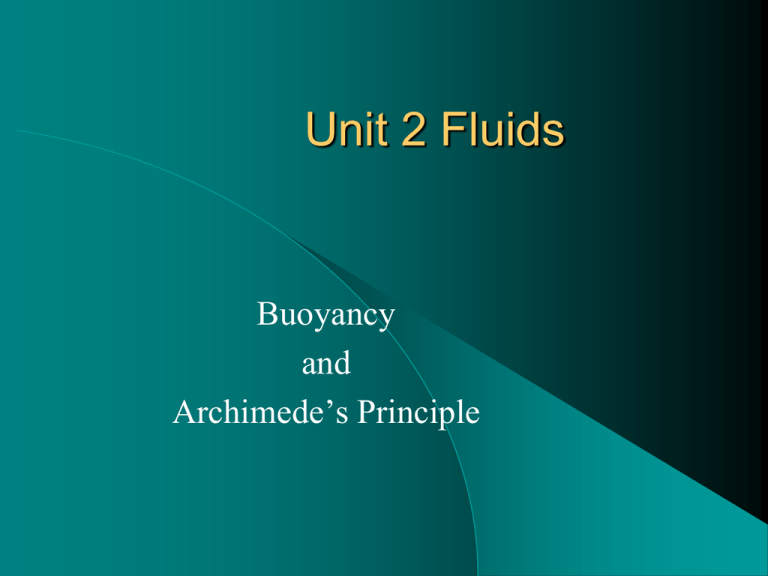
Unit 2 Fluids Buoyancy and Archimede’s Principle Buoyancy and Buoyant Forces When you are swimming in water, there are two forces that work against each other and affect the motion of your body. the force of gravity is pulling you down the water is also pushing you up with a buoyant force Bouyancy Buoyant force, or buoyancy, is the upward force on objects submerged in or floating on fluids. A buoyant force pushes away from the centre of Earth. Bouyancy Bouyancy an object will float if its buoyant force, when fully immersed, is greater than its weight (gravitational force) it will sink if its weight is greater than the buoyant force it will float when the buoyant force is equal to its weight (or the force of gravity) Archimede’s Principle This principle explains why some objects float in water and others sink. Salt vs. Fresh water Seawater (salt water) has a density of 1.03 g/mL and fresh water has a density of 1.00 g/mL. Therefore, one litre of salt water weighs more than one litre of fresh water. That is, salt water can support more weight per volume than fresh water, so it is easier to float in salt water. Average Density The average density of an object is the total mass of all substances that make up the object divided by the total volume. Average density results in objects that would normally sink being able to float. Examples of technologies that have been developed because of our understanding of density and buoyancy include: 1. Ships Ships can be built of steel because their hollow hull ensures that the average density of the ship is less than that of water. 2. Personal Floatation devices (Life jackets) Personal flotation devices (ex.Life jackets) are filled with a substance of very low density. This way, a life jacket lowers a person’s average density, allowing the person to float. 3. Submarines o By allowing water to flow in or out, a submarine can rise or sink in the water. o The submarine floats when its weight is equal to the buoyant force and it sinks when its weight is greater than the buoyant force. 4. Hot Air Balloons When the air inside a hot-air balloon is heated, the air particles: • gain energy and • spread out (forcing some of the particles out of the balloon) The air inside the balloon becomes less dense than the air surrounding it, so it rises. Average Density So: an object will float if its average density is less than the fluid in which it is immersed an object will sink if its average density is denser than the fluid in which it is immersed when the object’s density is the same as the medium, an object will neither sink nor float; it is said to be neutrally buoyant. Sink or Float? wooden boats vs. a water logged stick metal block vs. metal boats a sealed, empty plastic bottle vs. a plastic bottle full of water
